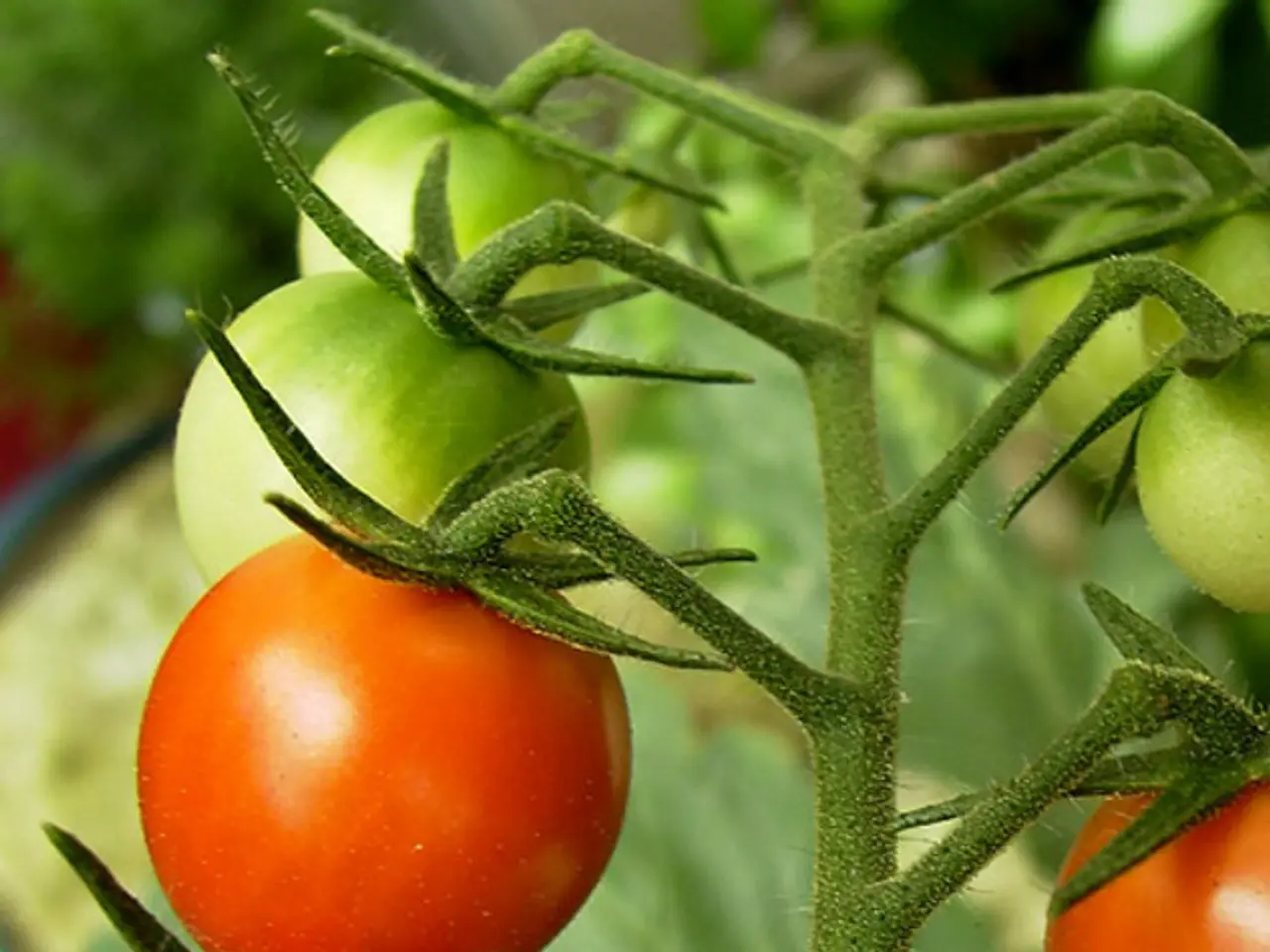Essential Blunders to Steer Clear of for Healthy, Flavorful Tomato Growth
In the world of tomato gardening, pruning might seem like an unnecessary chore. However, it plays a crucial role in maintaining the health and productivity of your plants. Here's a guide to help you prune your tomatoes effectively, avoiding common mistakes that can impact your harvest.
Firstly, it's essential to understand that not pruning indeterminate tomatoes can lead to overcrowded foliage and poor airflow, which can foster diseases. On the other hand, over-pruning determinate or bush types can reduce fruit yield.
When pruning, always start by assessing the plant. Step back and view the plant to decide what needs to happen, whether it's improving airflow, size containment, or both. Prune with intent and stop when you've met your goal.
Pruning without purpose often leads to tangled errors, fruit stems pulled, plant structure compromised, or disease-prone wounds left untreated. Leaving new foliage near frost time starts new growth that won't ripen, and weakens the plant's focus on existing fruit.
If your tomato leaves start yellowing after a heavy pruning session, it may be a sign that you have removed too many leaves at once. To avoid this, prune gradually and observe how your plant responds, prioritizing removing diseased, shaded, or crowded leaves, and keeping a good balance of foliage to support photosynthesis.
For indeterminate tomatoes, remove suckers under the first flower cluster. Allow one or two strong suckers for extra main stems, but no more. Pruning suckers as soon as they appear helps the plant focus its energy where it matters most.
For determinate/bush tomatoes, avoid heavy pruning. Instead, just remove the lowest leaves to improve airflow and reduce splashback but keep most suckers to preserve fruit production.
Never prune too heavily or too late in the season; stop significant pruning about two weeks before harvesting to allow the plants to protect fruit from sun damage. Maintain a balanced leaf canopy—remove enough leaves near the base for airflow but leave upper leaves to allow adequate sunlight without stressing the plant.
Lastly, disposing of leaves and suckers in the planting area can harbor blight spores all season. Discarding them properly is crucial to prevent disease spread. Healthy pruning can be composted separately, ensuring the pile heats to 140°F+.
By following these guidelines, you can maximize airflow, light penetration, reduce disease and sunscald, and improve overall fruit yield and quality. Happy pruning!
- To maintain a healthy garden and productive harvest, it's important to incorporate proper pruning techniques in your tomato-growing lifestyle.
- Adopting a strategy while pruning can help you avoid common mistakes such as compromised plant structure or disease-prone wounds.
- thoughtful pruning can help you balance the foliage, fostering a conducive environment for photosynthesis and fruit ripening.
- After each pruning session, ensure you properly dispose of pruned leaves and suckers to prevent the spread of diseases and maintain a healthier home-and-garden environment.




